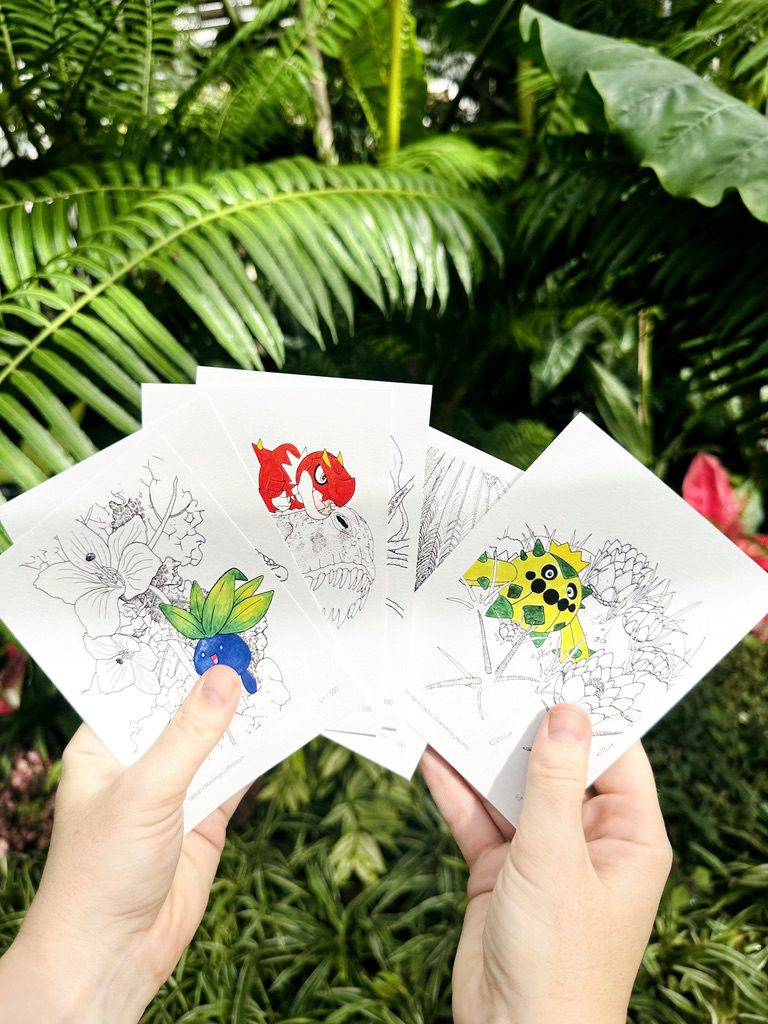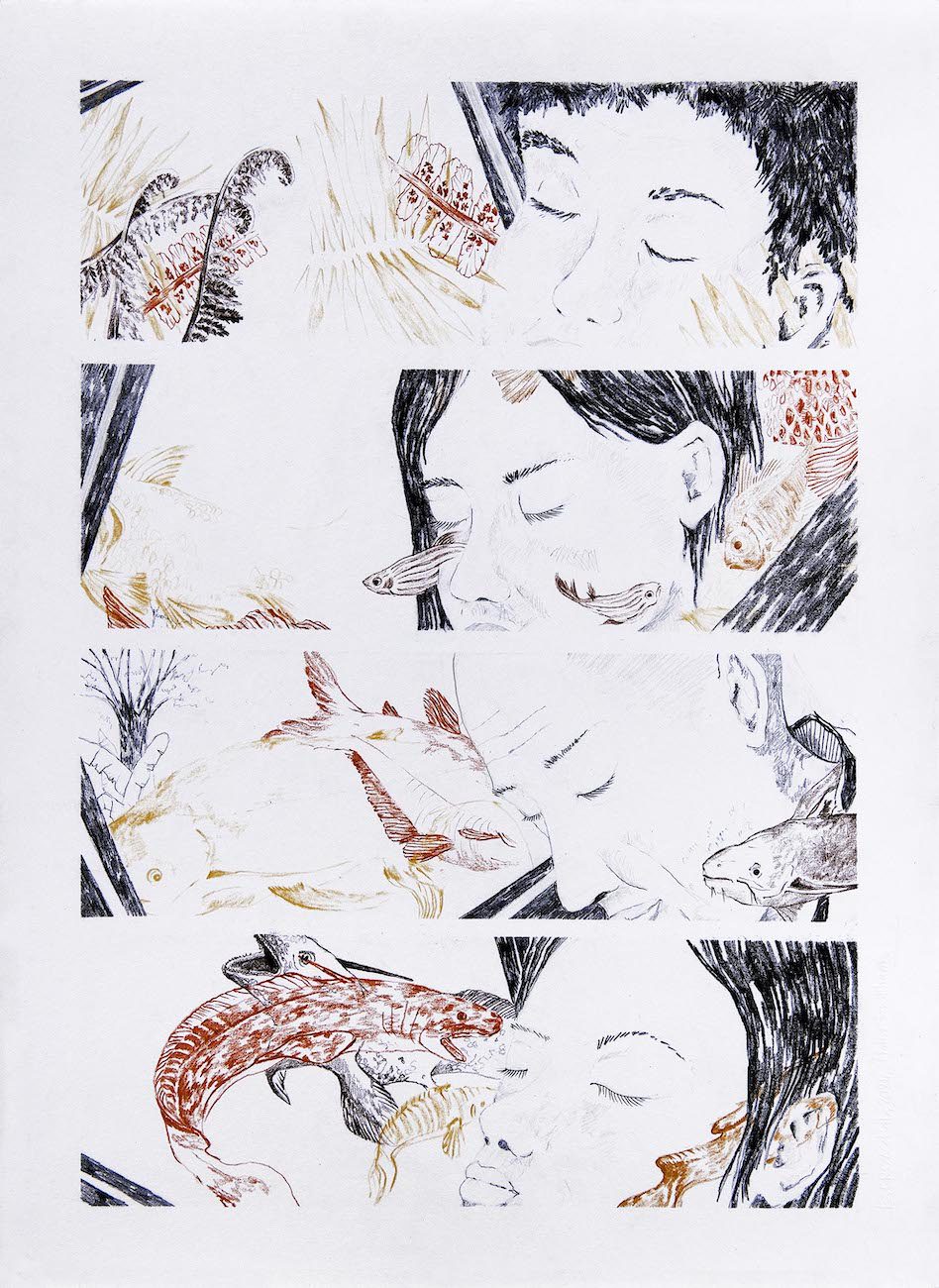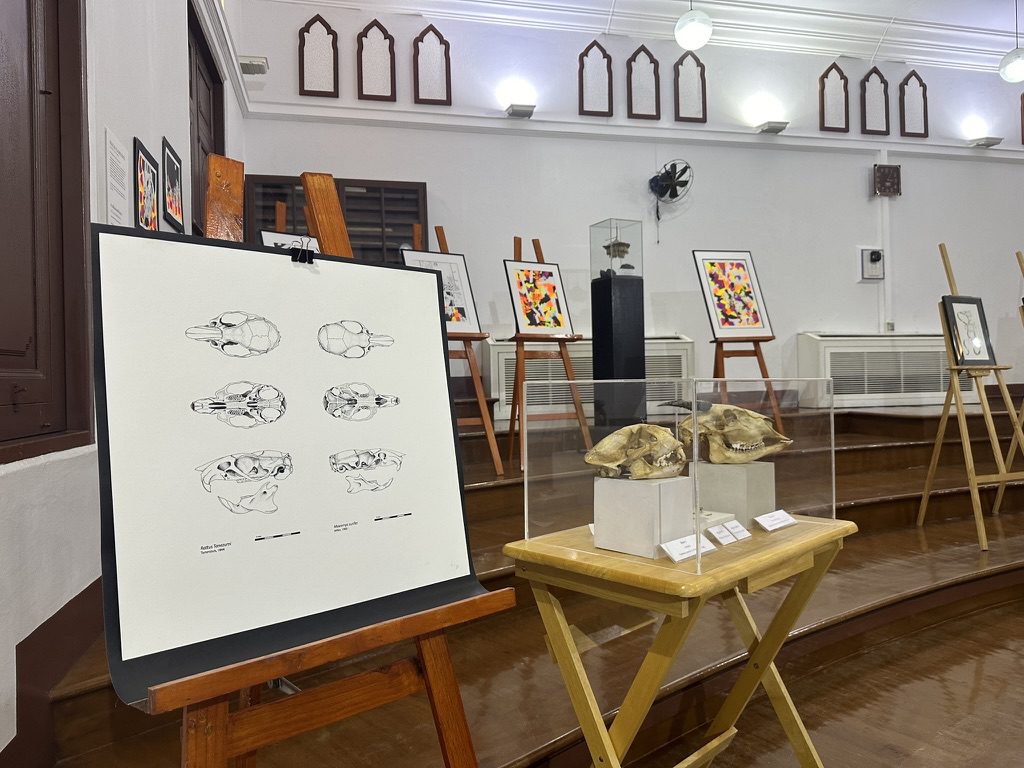ESTELLE CRUZ, AN ARTIST WHO COMBINES HER KNOWLEDGE OF ARCHITECTURE AND SCIENCE TO REFLECT BIODIVERSITY THROUGH HER ARTWORK
TEXT: CHIWIN LAOKETKIT
PHOTO COURTESY OF ESTELLE CRUZ
(For Thai, press here)
At the recent Bangkok Illustration Fair 2024, illustrations of plants, nature, and animals, sparked conversations that excited storytellers and those interested in the tiny creatures of the ecosystem. During the fair, Estelle Cruz, an architect and scientific artist, trained in architecture and civil engineering at a school in France, shared her journey. She also holds a PhD in ecology from the National Museum of Natural History in Paris, which led her to research biomimetic architectural design. It wasn’t until sometime later to shift her life’s direction and move to Thailand. There, her Draw for Biodiversity Project, which focuses on creating scientific illustrations to support conservation and researching biodiversity.
art4d had the opportunity to sit down to dive into her perspective on biomimicry architecture, aesthetic art, and her research and approach to scientific drawing.

Série 6 Pokémons & Biodiversity
art4d: During the Bangkok Illustration Fair 2024, what made you choose to present work on scientific drawing and Pokemon characters?
Estelle Cruz: Pokémon is a good way to get people’s attention on biodiversity challenges in Thailand. Some of them may play Pokémon Go but are not familiar with biology or biodiversity. So it’s a good way to start a conversation or discussion about their relationship with nature, their knowledge about biodiversity in Thailand, etc.
art4d: Would you mind giving us a brief overview of your interest in biodiversity?
EC: In 2010, during my studies in architecture and engineering, I discovered the biomimicry approach, which studies nature’s shapes, functions, and ecosystems to design sustainable products and buildings. This approach was theorized by Janine Benyus, an American ecologist. Biomimicry combines sustainable designs with the beauty of nature, while also addressing the environmental challenges associated with sustainability.
The construction industry has a huge impact on ecosystems and wildlife. Architects need to find new ways to design sustainable buildings. Bioinspiration is one way to achieve sustainable design and cities! I pursued a doctorate in biomimicry at the National Museum of Natural History of Paris.

Estelle Cruz
The course combined the fields of architecture, science, and ecology, and involved a one-year world tour in biomimicry and architecture. I worked in various labs to learn about biomimicry approaches, such as those at Kyoto University, Pearce Architecture Office in Zimbabwe, Victoria University of Wellington, and the MIT Building Technology Lab. Afterward, I joined Ceebios (Centre of Study of Biomimicry) and the Museum of Natural History in Paris to develop training for the building industry in biomimicry and design sustainable, bio-inspired buildings in France, in collaboration with architecture studios and building companies.

Paleontology x Comics strip

Fossil plant n°6
art4d: How did the Draw for Biodiversity Project start?
EC: In addition, through our research at Ceebios, I knew I wanted to explore more sensitive approaches to the environment. Can art transform our relationship to the environment? Since biodiversity is declining, I think art can change our relationship with the environment. I arrived in Bangkok in 2022 with a one-way ticket to Thailand. I had no plan, just pencils, skills in scientific drawing, and knowledge of sustainable architecture.
Then I started an arts and sciences postdoctoral position at Chulalongkorn University (in the Department of Biology, Faculty of Science). I asked researchers working on biodiversity in Thailand to take me into the field so I could draw and tell biodiversity stories. That was the plan, and it worked! I worked with paleontologists at the Paleontology Research and Education Center at Mahasarakham University for a month.
During that time, I drew comic books about dinosaurs and plant fossils. The colors I used were derived from the soil of the Phetchabun paleontological excavation site in Thailand. The fossilization of plants showed the fragility of their unique environment. I then traveled to Southeast Asia to join an NGO, where I drew hornbills in Borneo, Malaysia, as part of conservation efforts. I wrote and recorded stories about biodiversity, plants, and ecology. This was the beginning of Draw for Biodiversity.

The hornbill conservation 01

The hornbill conservation 02
art4d: Can you share your impression of art and architecture in Thailand?
EC: My favorite biodiversity exhibitions are held in Bangkok because there are many excellent Thai artists. I am currently studying and working on a comic novels based on mural painting at Wat Phumin in Nan province. One reason is that I love the symmetry and the geometry of traditional Thai painting. I also admire the paintings at Bangkok’s Wat Pho, which are also influenced by Chinese art.
art4d: It seems that your architectural research and studies have always been intense. When did you start practicing scientific drawing?
EC: Scientific drawing is part of the doctoral studies at the Museum of Natural History in Paris. I enrolled in a one-week course with Didier Geffard-Kuriyama and Pascal Le Roc’h to learn how to draw specimens for illustrating scientific publications. My first scientific drawing was of Goliathus goliatus, and it took 20 hours to finish. Now I can draw much faster!

Anthropology Thailand
art4d: What are your scientific drawing methods?
EC: Scientific drawing involves illustrating specimens for scientific papers. It differs from naturalist drawing since the image doesn’t stand alone. The scientific illustration must always be accompanied by text. In Thailand, many universities, such as Chulalongkorn, Silpakorn, Kasetsart, Mahidol, Thammasat, and others, offer courses on scientific drawing. I had the opportunity to exchange experiences, and I was very impressed by the quality of the teaching in Thailand—for instance, the program led by Asst. Prof. Dr. Chadtip Rodtassana.

Rodents: A comparative analysis and Arts – Sciences work exhibited at the Museum of Natural History of Chulalongkorn
art4d: In your normal working life, how do you balance your work as an architectural researcher and an artist who creates scientific drawings?
EC: It’s not easy to balance them. I’ve been working at Chulalongkorn University for some time now, so my mornings are dedicated to science, afternoons to art, and evenings to prepare exhibitions. I’m mostly working on arts and comics, so my work isn’t related to architecture that much anymore. But for the comic drawing, I think my background in architecture strongly influences them, particularly in the compositional aspects.
Currently, I’m doing research with the university on Thai comics, specifically Chaiyapruek Magazine. We are studying the biodiversity depicted in the Chaiyapruek Cartoon – looking for elements like elephants, plants, and fish – and analyzing how biodiversity is represented in Thai popular culture. Take the clownfish, for example. After the movie Finding Nemo came out, scientists were afraid that clownfish would become pets.
Similarly, if you create movies focusing on biodiversity, it can have unintended consequences. There is a strong relationship between movies or cartoons and how people perceive biodiversity, depending on the stories being told. In the Chaiyapruek Cartoon, we looked for that biodiversity and found many of them. At the same time, I’m also involved in an art and science project in collaboration with NGOs to support Thailand’s efforts in protecting biodiversity. Lastly, I plan to publish a comic book titled Researchers Among the Living in French, English, and Thai. The book will document nature conservation and biodiversity in Southeast Asia.




